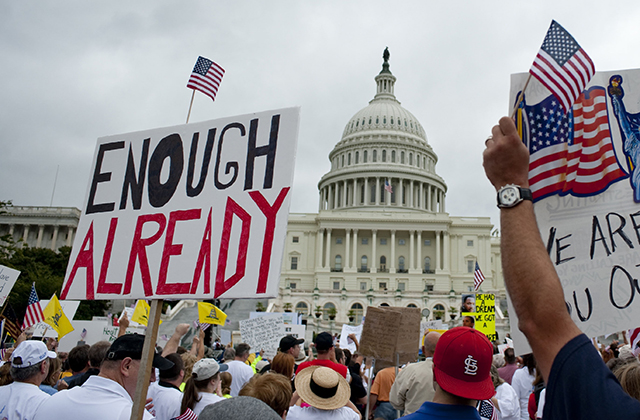In public policy, bad ideas — no matter how many times they have been discredited — never completely go away. They seem to pop up over and over. Enter the hot new book that has captured the imagination and attention of the left because it endorses an 80 percent tax rate on the rich in the name of “leveling” incomes.
The book is “Capital in the Twenty-First Century” by French economist Thomas Piketty. In addition to 1970s-style tax rates, he wants a new wealth tax on the rich and more money for social-welfare programs. He’s being treated like the modern-day Adam Smith by the media.
The way to create a more equal distribution of income, apparently, is by making everyone poorer.
Mr. Piketty warns that “meritocratic extremism” — which is another way of saying you get to keep the fruits of your labor — is ruining our nation’s economy, and if we don’t divide the pie more equally, the result could be “truly frightening.” He says that his goal is to “save capitalism,” which sounds much like the logic of President George W. Bush circa 2008 during the height of the financial crisis: We need to suspend the free-enterprise system in order to save it.
Mr. Piketty insists he has 200 years of evidence to show that tax rates can and should go much higher on the rich. He must not be counting the most recent 50 years, though, because this has been an era that has proven time and again that high tax rates can destroy an economy.
If tax rates didn’t matter, as Mr. Piketty conjectures, then it would be hard to explain why Florida and Texas — states with no state income tax — have gained four times the number of jobs over the past 20 years as the two states with the highest rates, California and New York (with rates close 13 percent). If overspending and high tax rates create a workers’ paradise, why have American workers left these two states in such a steady stream?
The national story is even more compelling. In the 1960s, John F. Kennedy cut tax rates. This was followed by a similar round of rate reductions by Ronald Reagan in the 1980s. Under Reagan, the highest tax rate fell from 70 percent to 28 percent in 1980.
Three things happened in the 1960s and ‘80s: The economy exploded; the share of income taxes paid by the rich increased; and total tax receipts doubled as the economy roared back to life.
Here’s an amazing statistic that Mr. Piketty chooses to ignore. When the highest income-tax rate was 70 percent in the 1970s, the richest 1 percent paid about 19 percent of all federal income taxes.
But with a rate of 35 percent on the rich in 2011, the rich paid close to 38 percent of all income taxes. The rich always find ways around high income taxes.
Mr. Piketty argues that even at an 80 percent tax rate, the rich would invest just as much as they did when rates were only half as high. By this logic, an investor will put his money down whether the government takes 80 cents out of every dollar earned or 40 cents of every dollar.
In the real world, though, the amount of investment — and where the money is invested — is highly sensitive to the after-tax return. Business owners and investors move themselves or their investments to other places to escape high taxes.
Some 100 nations have ratcheted down tax rates over the past 30 years. It’s pretty simple, really: If you tax work, investment and achievement at a higher rate, you are going to get less of these things.
That the left has come full circle to celebrating the anti-growth tax rates of the bad old days of the 1970s is a depressing reminder that liberals really haven’t learned much of anything over the past several decades. In the Carter years, the combination of high tax rates and high inflation pushed Americans into ever-higher tax brackets, which contributed to the worst losses in middle-class incomes since the Great Depression.
If America is foolish enough to follow Mr. Piketty’s advice, which is based purely on class warfare and envy, we may very well re-create the 1970s economic results all over again.
Originally published in The Washington Times.
